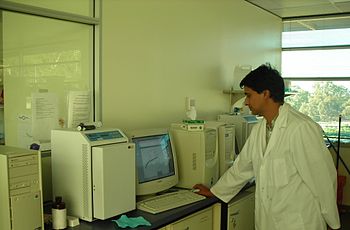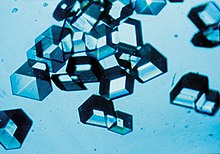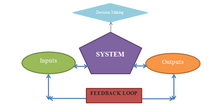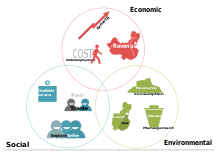Plant breeding is the science of changing the traits of plants in order to produce desired characteristics. It has been used to improve the quality of nutrition in products for humans and animals.
Plant breeding can be accomplished through many different techniques
ranging from simply selecting plants with desirable characteristics for
propagation, to methods that make use of knowledge of genetics and
chromosomes, to more complex molecular techniques.
Genes in a plant are what determine what type of qualitative or
quantitative traits it will have. Plant breeders strive to create a
specific outcome of plants and potentially new plant varieties.
Plant breeding has been practiced for thousands of years, since
near the beginning of human civilization. It is practiced worldwide by
individuals such as gardeners and farmers, and by professional plant
breeders employed by organizations such as government institutions, universities, crop-specific industry associations or research centers.
International development agencies believe that breeding new crops is important for ensuring food security
by developing new varieties that are higher yielding, disease
resistant, drought tolerant or regionally adapted to different
environments and growing conditions.
History
Plant breeding started with sedentary agriculture and particularly the domestication of the first agricultural plants, a practice which is estimated to date back 9,000 to 11,000 years. Initially early farmers simply selected food plants with particular desirable characteristics, and employed these as progenitors for subsequent generations, resulting in an accumulation of valuable traits over time.
Grafting technology had been practiced in China before 2000 BCE.
By 500 BCE grafting was well established and practiced.
Gregor Mendel (1822–84) is considered the "father of modern genetics". His experiments with plant hybridization led to his establishing laws of inheritance. Genetics stimulated research to improve crop production through plant breeding.
Modern plant breeding is applied genetics, but its scientific basis is broader, covering molecular biology, cytology, systematics, physiology, pathology, entomology, chemistry, and statistics (biometrics). It has also developed its own technology.
Classical plant breeding
One major technique of plant breeding is selection, the process of
selectively propagating plants with desirable characteristics and
eliminating or "culling" those with less desirable characteristics.
Another technique is the deliberate interbreeding (crossing)
of closely or distantly related individuals to produce new crop
varieties or lines with desirable properties. Plants are crossbred to
introduce traits/genes from one variety or line into a new genetic background. For example, a mildew-resistant pea
may be crossed with a high-yielding but susceptible pea, the goal of
the cross being to introduce mildew resistance without losing the
high-yield characteristics. Progeny from the cross would then be crossed
with the high-yielding parent to ensure that the progeny were most like
the high-yielding parent, (backcrossing).
The progeny from that cross would then be tested for yield (selection,
as described above) and mildew resistance and high-yielding resistant
plants would be further developed. Plants may also be crossed with
themselves to produce inbred varieties for breeding. Pollinators may be excluded through the use of pollination bags.
Classical breeding relies largely on homologous recombination between chromosomes to generate genetic diversity. The classical plant breeder may also make use of a number of in vitro techniques such as protoplast fusion, embryo rescue or mutagenesis (see below) to generate diversity and produce hybrid plants that would not exist in nature.
Traits that breeders have tried to incorporate into crop plants include:
- Improved quality, such as increased nutrition, improved flavor, or greater beauty
- Increased yield of the crop
- Increased tolerance of environmental pressures (salinity, extreme temperature, drought)
- Resistance to viruses, fungi and bacteria
- Increased tolerance to insect pests
- Increased tolerance of herbicides
- Longer storage period for the harvested crop
Before World War II
Garton's catalogue from 1902
Successful commercial plant breeding concerns were founded from the late 19th century. Gartons Agricultural Plant Breeders
in England was established in the 1890s by John Garton, who was one of
the first to commercialize new varieties of agricultural crops created
through cross-pollination. The firm's first introduction was Abundance Oat, one of the first agricultural grain varieties bred from a controlled cross, introduced to commerce in 1892.
In the early 20th century, plant breeders realized that Mendel's findings on the non-random nature of inheritance could be applied to seedling populations produced through deliberate pollinations to predict the frequencies of different types. Wheat hybrids were bred to increase the crop production of Italy during the so-called "Battle for Grain" (1925–1940). Heterosis was explained by George Harrison Shull.
It describes the tendency of the progeny of a specific cross to
outperform both parents. The detection of the usefulness of heterosis
for plant breeding has led to the development of inbred lines that
reveal a heterotic yield advantage when they are crossed. Maize was the first species where heterosis was widely used to produce hybrids.
Statistical
methods were also developed to analyze gene action and distinguish
heritable variation from variation caused by environment. In 1933
another important breeding technique, cytoplasmic male sterility (CMS), developed in maize, was described by Marcus Morton Rhoades. CMS is a maternally inherited trait that makes the plant produce sterile pollen. This enables the production of hybrids without the need for labor-intensive detasseling.
These early breeding techniques resulted in large yield increase in the United States in the early 20th century. Similar yield increases were not produced elsewhere until after World War II, the Green Revolution increased crop production in the developing world in the 1960s.
After World War II
In vitro-culture of Vitis (grapevine), Geisenheim Grape Breeding Institute
Following World War II
a number of techniques were developed that allowed plant breeders to
hybridize distantly related species, and artificially induce genetic
diversity.
When distantly related species are crossed, plant breeders make use of a number of plant tissue culture
techniques to produce progeny from otherwise fruitless mating.
Interspecific and intergeneric hybrids are produced from a cross of
related species or genera that do not normally sexually reproduce with each other. These crosses are referred to as Wide crosses. For example, the cereal triticale is a wheat and rye
hybrid. The cells in the plants derived from the first generation
created from the cross contained an uneven number of chromosomes and as
result was sterile. The cell division inhibitor colchicine was used to double the number of chromosomes in the cell and thus allow the production of a fertile line.
Failure to produce a hybrid may be due to pre- or post-fertilization incompatibility. If fertilization is possible between two species or genera, the hybrid embryo
may abort before maturation. If this does occur the embryo resulting
from an interspecific or intergeneric cross can sometimes be rescued and
cultured to produce a whole plant. Such a method is referred to as Embryo Rescue. This technique has been used to produce new rice for Africa, an interspecific cross of Asian rice (Oryza sativa) and African rice (Oryza glaberrima).
Hybrids may also be produced by a technique called protoplast fusion. In this case protoplasts are fused, usually in an electric field. Viable recombinants can be regenerated in culture.
Chemical mutagens like EMS and DMS, radiation and transposons are used to generate mutants with desirable traits to be bred with other cultivars – a process known as Mutation Breeding. Classical plant breeders also generate genetic diversity within a species by exploiting a process called somaclonal variation, which occurs in plants produced from tissue culture, particularly plants derived from callus. Induced polyploidy, and the addition or removal of chromosomes using a technique called chromosome engineering may also be used.
Agricultural research on potato plants
When a desirable trait has been bred into a species, a number of
crosses to the favored parent are made to make the new plant as similar
to the favored parent as possible. Returning to the example of the
mildew resistant pea being crossed with a high-yielding but susceptible
pea, to make the mildew resistant progeny of the cross most like the
high-yielding parent, the progeny will be crossed back to that parent
for several generations. This process removes most of the genetic contribution of the mildew
resistant parent. Classical breeding is therefore a cyclical process.
With classical breeding techniques, the breeder does not know
exactly what genes have been introduced to the new cultivars. Some scientists therefore argue that plants produced by classical breeding methods should undergo the same safety testing regime as genetically modified
plants. There have been instances where plants bred using classical
techniques have been unsuitable for human consumption, for example the poison solanine was unintentionally increased to unacceptable levels in certain varieties of potato through plant breeding. New potato varieties are often screened for solanine levels before reaching the marketplace.
Modern plant breeding
Modern
plant breeding may use techniques of molecular biology to select, or in
the case of genetic modification, to insert, desirable traits into
plants. Application of biotechnology or molecular biology is also known
as molecular breeding.
Modern facilities in molecular biology are now used in plant breeding.
Marker assisted selection
Sometimes many different genes can influence a desirable trait in plant breeding. The use of tools such as molecular markers or DNA fingerprinting
can map thousands of genes. This allows plant breeders to screen large
populations of plants for those that possess the trait of interest. The
screening is based on the presence or absence of a certain gene as
determined by laboratory procedures, rather than on the visual
identification of the expressed trait in the plant. The purpose of
marker assisted selection, or plant genomes analysis, is to identify the
location and function (phenotype) of various genes within the genome. If all of the genes are identified it leads to Genome sequence.
All plants have varying sizes and lengths of genomes with genes that
code for different proteins, but many are also the same. If a gene's
location and function is identified in one plant species, a very similar
gene likely can also be found in a similar location in another species
genome.
Reverse breeding and doubled haploids (DH)
Homozygous plants with desirable traits can be produced from heterozygous starting plants, if a haploid cell with the alleles for those traits can be produced, and then used to make a doubled haploid.
The doubled haploid will be homozygous for the desired traits.
Furthermore, two different homozygous plants created in that way can be
used to produce a generation of F1 hybrid
plants which have the advantages of heterozygosity and a greater range
of possible traits. Thus, an individual heterozygous plant chosen for
its desirable characteristics can be converted into a heterozygous
variety (F1 hybrid) without the necessity of vegetative reproduction but as the result of the cross of two homozygous/doubled haploid lines derived from the originally selected plant.
Using plant tissue culturing can produce haploid or double haploid
plant lines and generations. This minimizes the amount of genetic
diversity among that plant species in order to select for desirable
traits that will increase the fitness of the individuals. Using this
method decreases the need for breeding multiple generations of plants to
get a generation that is homologous for the desired traits, therefore
save much time in the process. There are many plant tissue culturing
techniques that can be used to achieve the haploid plants, but
microspore culturing is currently the most promising for producing the
largest numbers of them.
Genetic modification
Genetic modification of plants is achieved by adding a specific gene or genes to a plant, or by knocking down a gene with RNAi, to produce a desirable phenotype. The plants resulting from adding a gene are often referred to as transgenic plants.
If for genetic modification genes of the species or of a crossable
plant are used under control of their native promoter, then they are
called cisgenic plants.
Sometimes genetic modification can produce a plant with the desired
trait or traits faster than classical breeding because the majority of
the plant's genome is not altered.
To genetically modify a plant, a genetic construct must be
designed so that the gene to be added or removed will be expressed by
the plant. To do this, a promoter to drive transcription
and a termination sequence to stop transcription of the new gene, and
the gene or genes of interest must be introduced to the plant. A marker
for the selection of transformed plants is also included. In the laboratory, antibiotic resistance
is a commonly used marker: Plants that have been successfully
transformed will grow on media containing antibiotics; plants that have
not been transformed will die. In some instances markers for selection
are removed by backcrossing with the parent plant prior to commercial release.
The construct can be inserted in the plant genome by genetic recombination using the bacteria Agrobacterium tumefaciens or A. rhizogenes, or by direct methods like the gene gun or microinjection. Using plant viruses
to insert genetic constructs into plants is also a possibility, but the
technique is limited by the host range of the virus. For example, Cauliflower mosaic virus (CaMV) only infects cauliflower
and related species. Another limitation of viral vectors is that the
virus is not usually passed on the progeny, so every plant has to be
inoculated.
The majority of commercially released transgenic plants are currently limited to plants that have introduced resistance to insect pests and herbicides. Insect resistance is achieved through incorporation of a gene from Bacillus thuringiensis (Bt) that encodes a protein that is toxic to some insects. For example, the cotton bollworm, a common cotton pest, feeds on Bt cotton it will ingest the toxin and die. Herbicides usually work by binding to certain plant enzymes and inhibiting their action. The enzymes that the herbicide inhibits are known as the herbicides target site. Herbicide resistance can be engineered into crops by expressing a version of target site protein that is not inhibited by the herbicide. This is the method used to produce glyphosate resistant crop plants.
Genetic modification can further increase yields by increasing
stress tolerance to a given environment. Stresses such as temperature
variation, are signalled to the plant via a cascade of signalling
molecules which will activate a Transcription factor to regulate Gene expression.
Overexpression of particular genes involved in cold acclimation has
been shown to become more resistant to freezing, which is one common
cause of yield loss.
Genetic modification of plants that can produce pharmaceuticals (and industrial chemicals), sometimes called pharming, is a rather radical new area of plant breeding.
Issues and concerns
Modern
plant breeding, whether classical or through genetic engineering, comes
with issues of concern, particularly with regard to food crops. The
question of whether breeding can have a negative effect on nutritional
value is central in this respect. Although relatively little direct
research in this area has been done, there are scientific indications
that, by favoring certain aspects of a plant's development, other
aspects may be retarded. A study published in the Journal of the American College of Nutrition in 2004, entitled Changes in USDA Food Composition Data for 43 Garden Crops, 1950 to 1999, compared nutritional analysis of vegetables done in 1950 and in 1999, and found substantial decreases in six of 13 nutrients measured, including 6% of protein and 38% of riboflavin. Reductions in calcium, phosphorus, iron and ascorbic acid were also found. The study, conducted at the Biochemical Institute, University of Texas at Austin, concluded in summary: "We
suggest that any real declines are generally most easily explained by
changes in cultivated varieties between 1950 and 1999, in which there
may be trade-offs between yield and nutrient content."
The debate surrounding genetically modified food during the 1990s peaked in 1999 in terms of media coverage and risk perception, and continues today – for example, "Germany has thrown its weight behind a growing European mutiny over genetically modified crops by banning the planting of a widely grown pest-resistant corn variety." The debate encompasses the ecological impact of genetically modified plants, the safety of genetically modified food and concepts used for safety evaluation like substantial equivalence.
Such concerns are not new to plant breeding. Most countries have
regulatory processes in place to help ensure that new crop varieties
entering the marketplace are both safe and meet farmers' needs. Examples
include variety registration, seed schemes, regulatory authorizations
for GM plants, etc.
Plant breeders' rights
is also a major and controversial issue. Today, production of new
varieties is dominated by commercial plant breeders, who seek to protect
their work and collect royalties through national and international
agreements based in intellectual property rights.
The range of related issues is complex. In the simplest terms, critics
of the increasingly restrictive regulations argue that, through a
combination of technical and economic pressures, commercial breeders are
reducing biodiversity and significantly constraining individuals (such as farmers) from developing and trading seed on a regional level. Efforts to strengthen breeders' rights, for example, by lengthening periods of variety protection, are ongoing.
When new plant breeds or cultivars are bred, they must be
maintained and propagated. Some plants are propagated by asexual means
while others are propagated by seeds. Seed propagated cultivars require
specific control over seed source and production procedures to maintain
the integrity of the plant breeds results. Isolation is necessary to
prevent cross contamination with related plants or the mixing of seeds
after harvesting. Isolation is normally accomplished by planting
distance but in certain crops, plants are enclosed in greenhouses or
cages (most commonly used when producing F1 hybrids.)
Role of plant breeding in organic agriculture
Critics of organic agriculture
claim it is too low-yielding to be a viable alternative to conventional
agriculture. However, part of that poor performance may be the result
of growing poorly adapted varieties.
It is estimated that over 95% of organic agriculture is based on
conventionally adapted varieties, even though the production
environments found in organic vs. conventional farming systems are
vastly different due to their distinctive management practices.
Most notably, organic farmers have fewer inputs available than
conventional growers to control their production environments. Breeding
varieties specifically adapted to the unique conditions of organic
agriculture is critical for this sector to realize its full potential.
This requires selection for traits such as:
- Water use efficiency
- Nutrient use efficiency (particularly nitrogen and phosphorus)
- Weed competitiveness
- Tolerance of mechanical weed control
- Pest/disease resistance
- Early maturity (as a mechanism for avoidance of particular stresses)
- Abiotic stress tolerance (i.e. drought, salinity, etc...)
Currently, few breeding programs are directed at organic agriculture
and until recently those that did address this sector have generally
relied on indirect selection (i.e. selection in conventional
environments for traits considered important for organic agriculture).
However, because the difference between organic and conventional
environments is large, a given genotype may perform very differently in each environment due to an interaction between genes and the environment.
If this interaction is severe enough, an important trait required for
the organic environment may not be revealed in the conventional
environment, which can result in the selection of poorly adapted
individuals.
To ensure the most adapted varieties are identified, advocates of
organic breeding now promote the use of direct selection (i.e. selection
in the target environment) for many agronomic traits.
There are many classical and modern breeding techniques that can
be utilized for crop improvement in organic agriculture despite the ban
on genetically modified organisms.
For instance, controlled crosses between individuals allow desirable
genetic variation to be recombined and transferred to seed progeny via
natural processes. Marker assisted selection
can also be employed as a diagnostics tool to facilitate selection of
progeny who possess the desired trait(s), greatly speeding up the
breeding process.
This technique has proven particularly useful for the introgression of
resistance genes into new backgrounds, as well as the efficient
selection of many resistance genes pyramided into a single individual.
Unfortunately, molecular markers are not currently available for many important traits, especially complex ones controlled by many genes.
Addressing global food security through plant breeding
For future agriculture to thrive there are necessary changes which must be made in accordance to arising global issues.
These issues are arable land, harsh cropping conditions and food
security which involves, being able to provide the world population with
food containing sufficient nutrients. These crops need to be able to
mature in several environments allowing for worldwide access, this is
involves issues such as drought tolerance. These global issues are
achievable through the process of plant breeding, as it offers the
ability to select specific genes allowing the crop to perform at a level
which yields the desired results.
Increased yield without expansion
With
an increasing population, the production of food needs to increase with
it. It is estimated that a 70% increase in food production is needed
by 2050 in order to meet the Declaration of the World Summit on Food
Security. But with the degradation of agricultural land, simply planting
more crops is no longer a viable option. New varieties of plants can in
some cases be developed through plant breeding that generate an
increase of yield without relying on an increase in land area. An
example of this can be seen in Asia, where food production per capita
has increased twofold. This has been achieved through not only the use
of fertilisers, but through the use of better crops that have been
specifically designed for the area.
Breeding for increased nutritional value
Plant
breeding can contribute to global food security as it is a
cost-effective tool for increasing nutritional value of forage and
crops. Improvements in nutritional value for forage crops from the use
of analytical chemistry and rumen fermentation technology have been
recorded since 1960; this science and technology gave breeders the
ability to screen thousands of samples within a small amount of time,
meaning breeders could identify a high performing hybrid quicker. The
main area genetic increases were made was in vitro dry matter
digestibility (IVDMD) resulting in 0.7-2.5% increase, at just 1%
increase in IVDMD a single Bos Taurus also known as beef cattle reported
3.2% increase in daily gains. This improvement indicates plant breeding
is an essential tool in gearing future agriculture to perform at a more
advanced level.
Breeding for tolerance
Plant
breeding of hybrid crops has become extremely popular worldwide in an
effort to combat the harsh environment. With long periods of drought and
lack of water or nitrogen stress tolerance has become a significant
part of agriculture. Plant breeders have focused on identifying crops
which will ensure crops perform under these conditions; a way to achieve
this is finding strains of the crop that is resistance to drought
conditions with low nitrogen. It is evident from this that plant
breeding is vital for future agriculture to survive as it enables
farmers to produce stress resistant crops hence improving food security.
In countries that experience harsh winters such as Iceland, Germany and
further east in Europe, plant breeders are involved in breeding for
tolerance to frost, continuous snow-cover, frost-drought (desiccation
from wind and solar radiation under frost) and high moisture levels in
soil in winter.
Participatory plant breeding
Participatory
plant breeding (PPB) is when farmers are involved in a crop improvement
programme with opportunities to make decisions and contribute to the
research process at different stages. Participatory approaches to crop improvement can also be applied when
plant biotechnologies are being used for crop improvement.
Local agricultural systems and genetic diversity are developed and
strengthened by crop improvement, which participatory crop improvement
(PCI) plays a large role. PPB is enhanced by farmers knowledge of the
quality required and evaluation of target environment which affects the
effectiveness of PPB.
List of notable plant breeders
- Thomas Andrew Knight
- Keith Downey
- Luther Burbank
- Nazareno Strampelli
- Niels Ebbesen Hansen
- Norman Borlaug
- Mentor pollen, inactivated pollen that is compatible with the female plant is mixed with pollen that would normally be incompatible. The mentor pollen has the effect of guiding the foreign pollen to the ovules.
- S1 generation, the product of self-fertilization.











